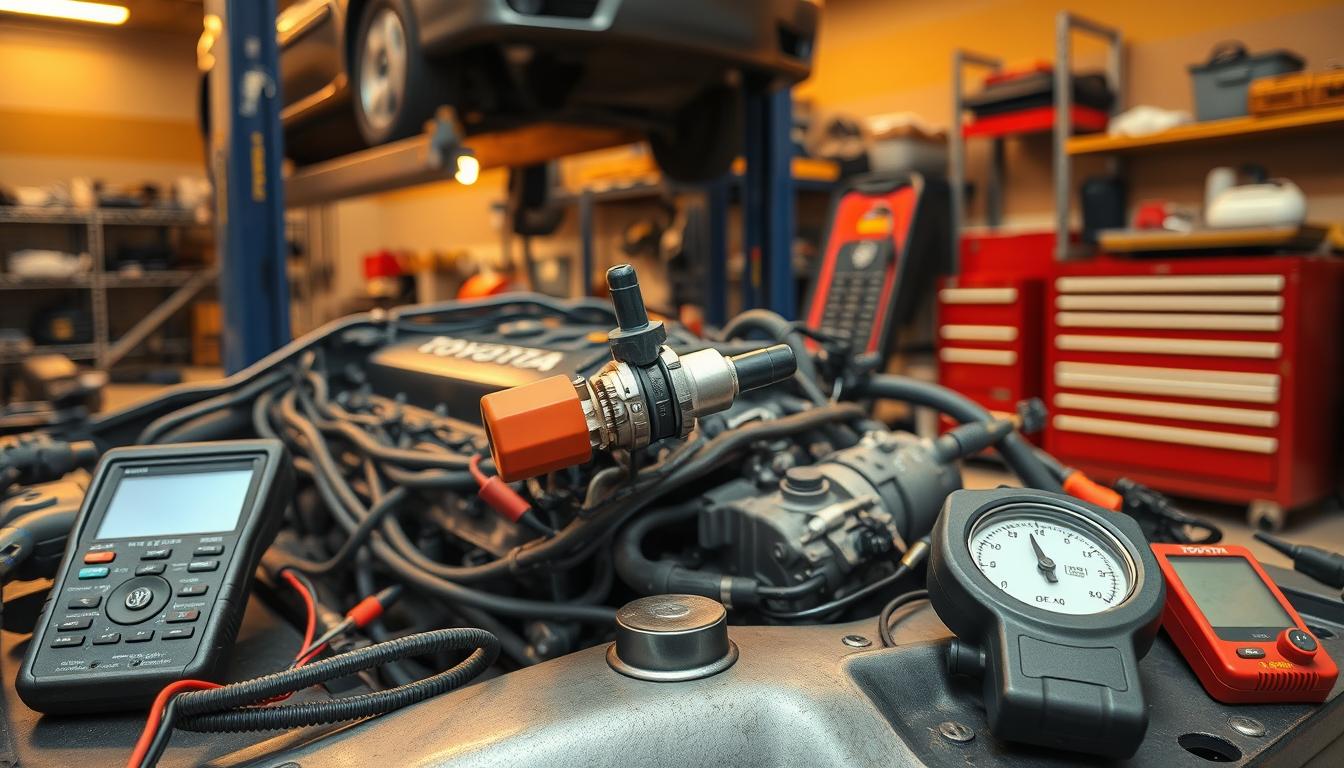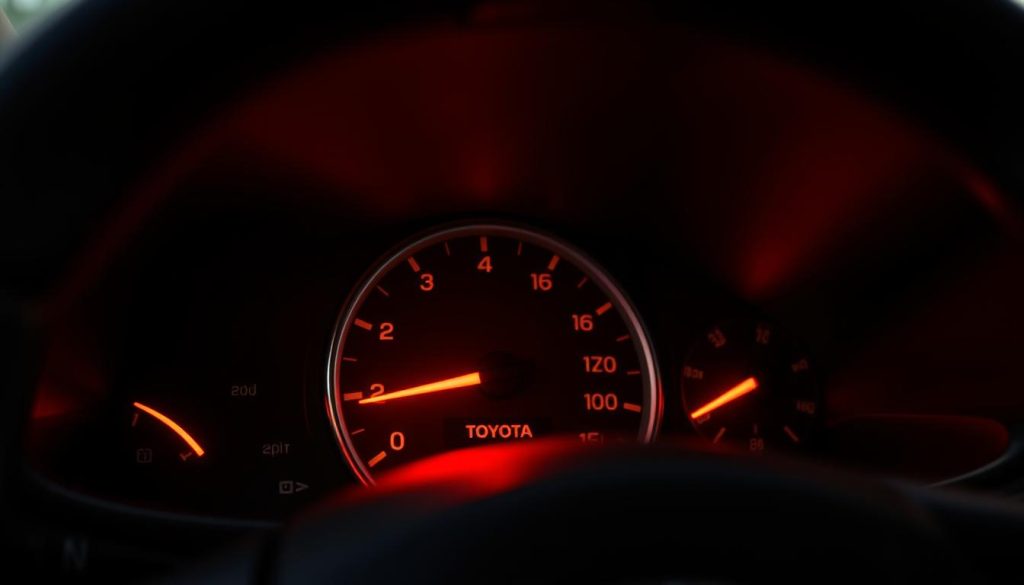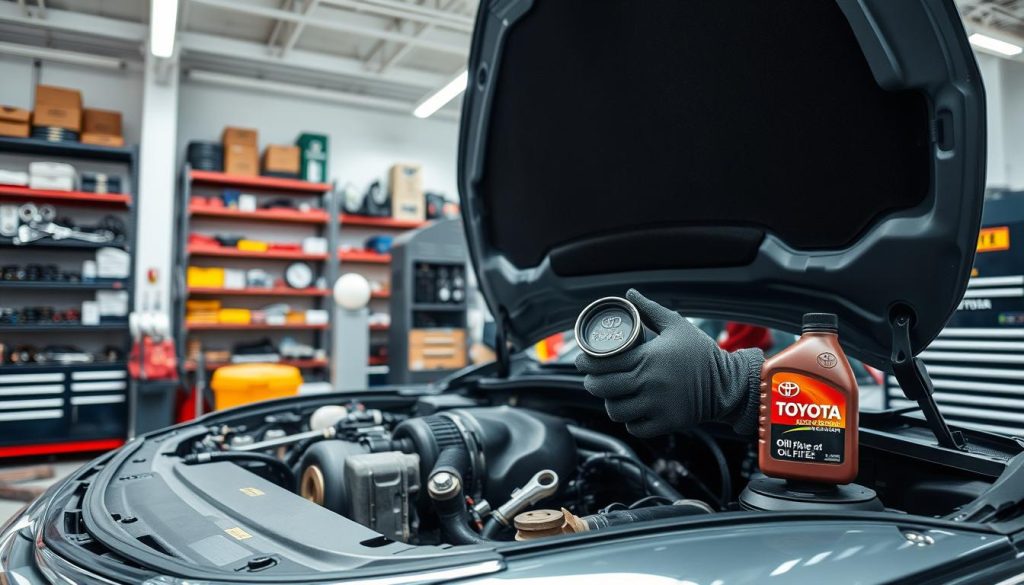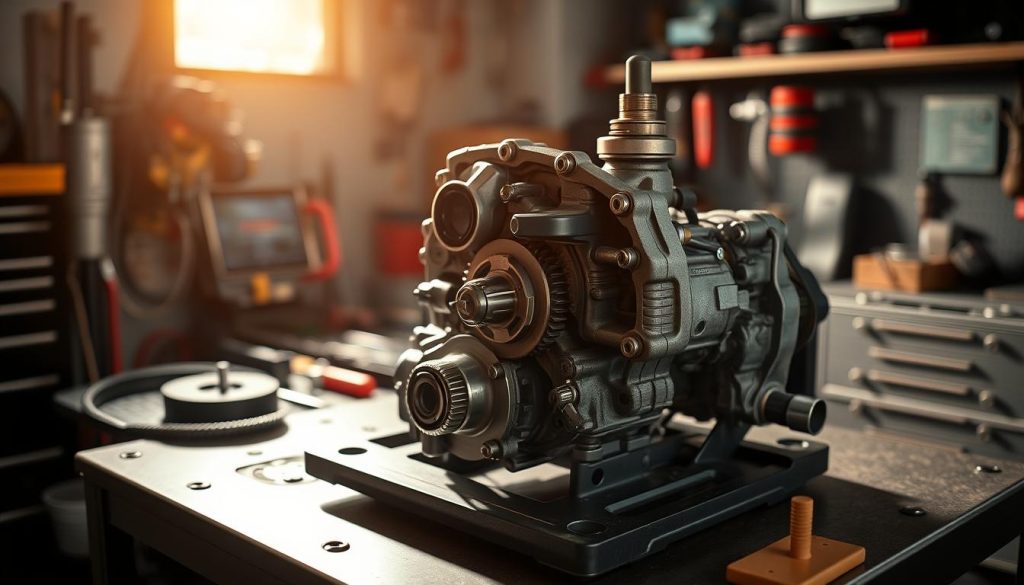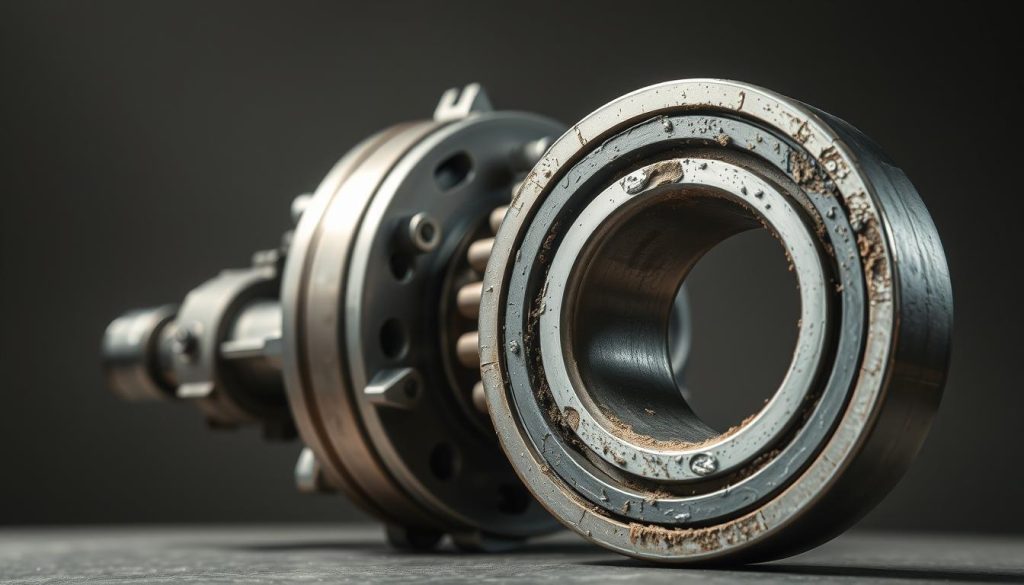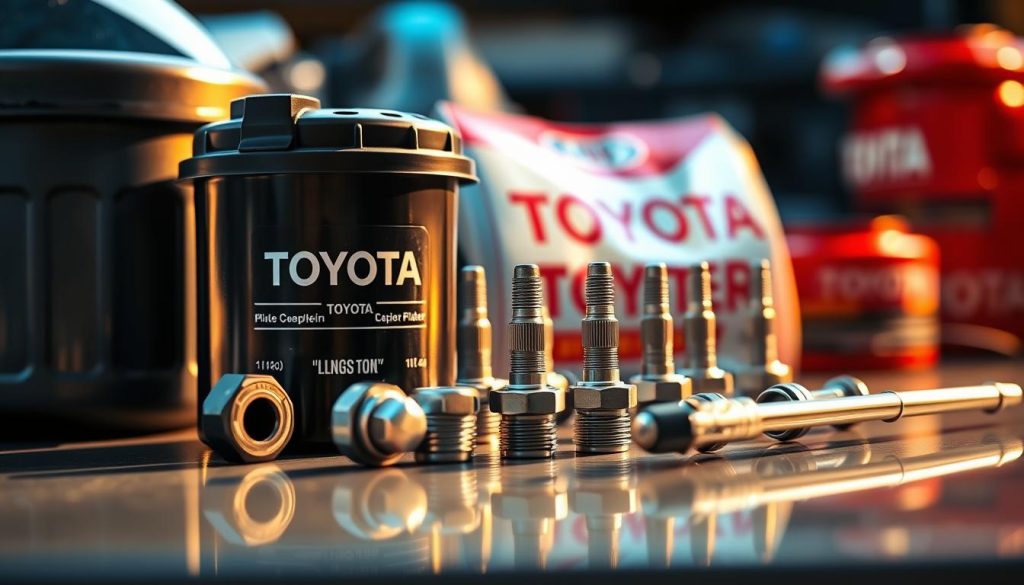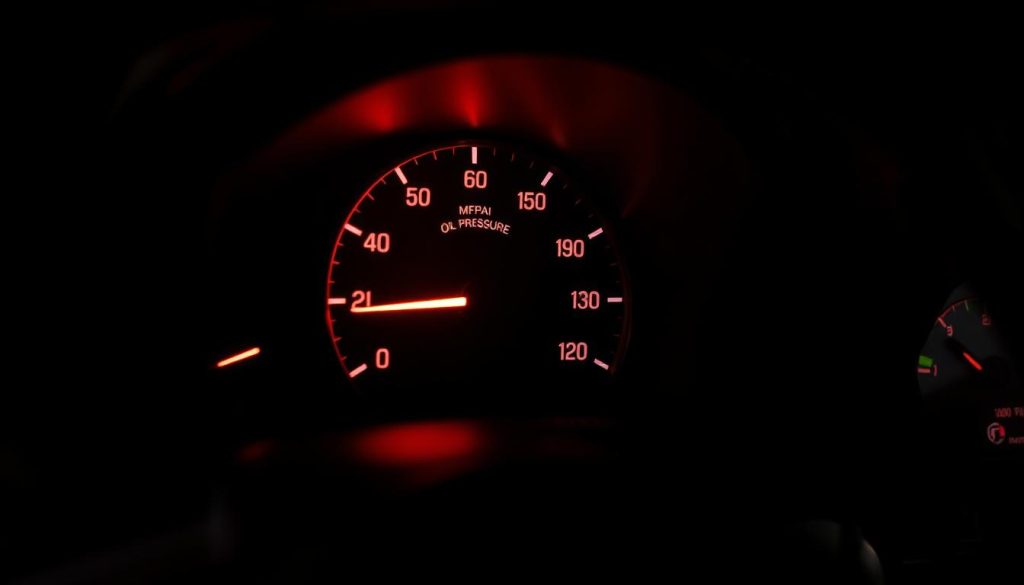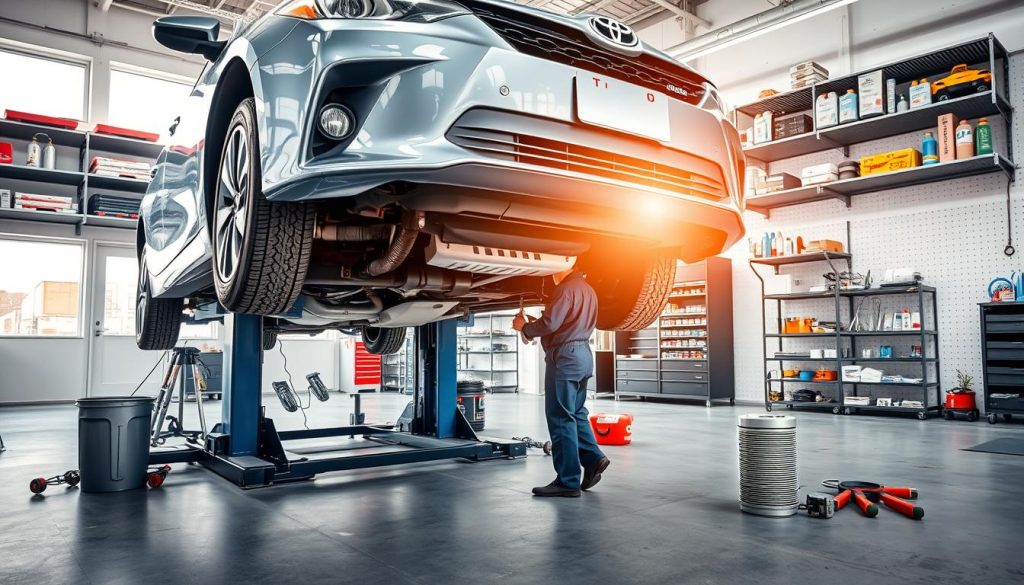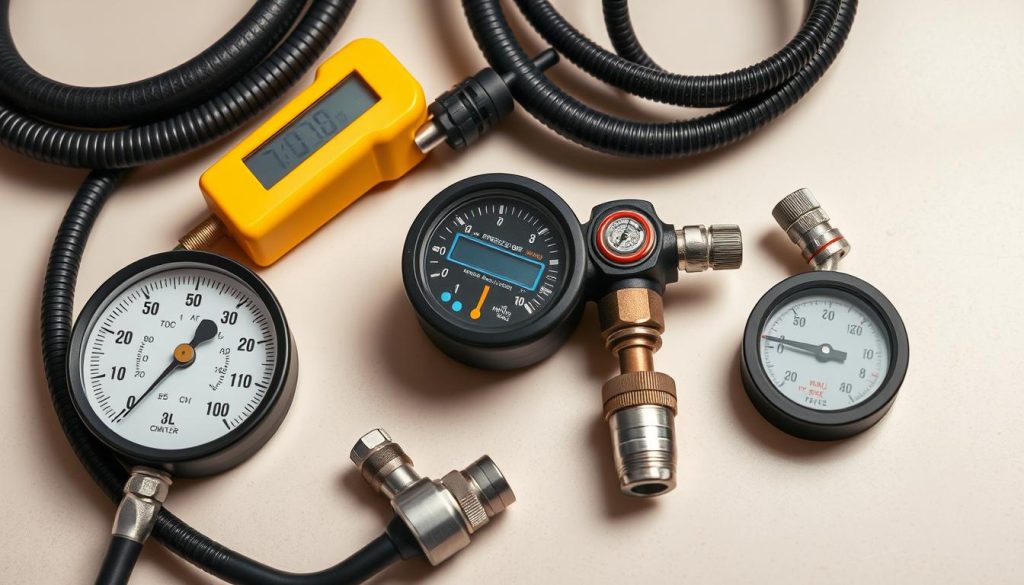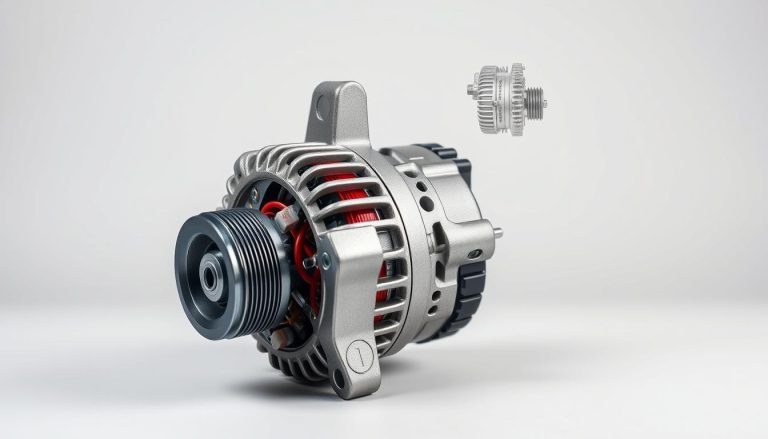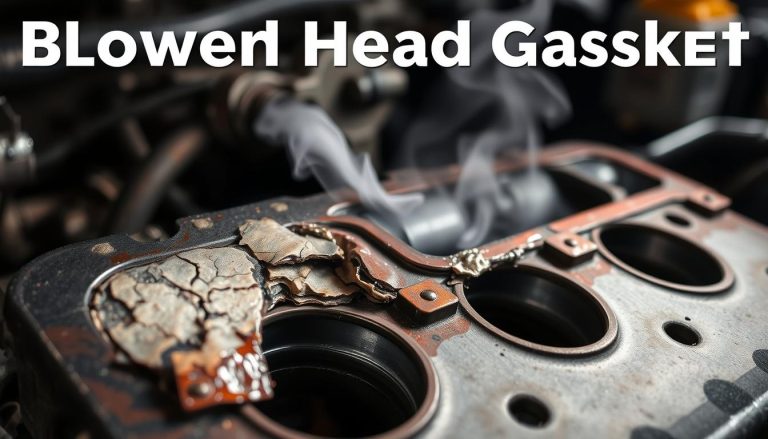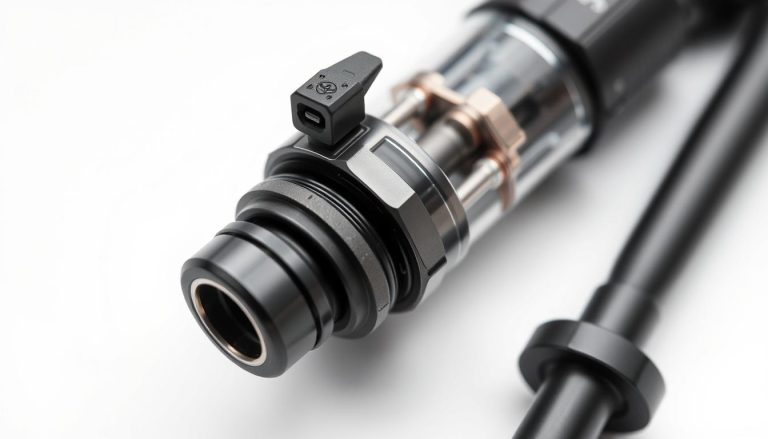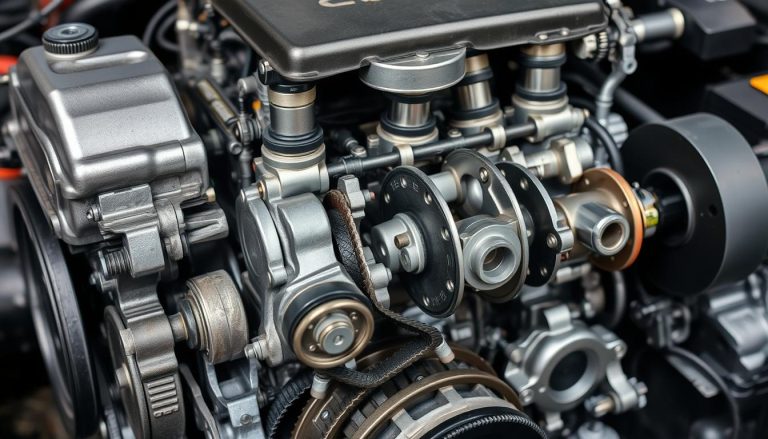Toyota Low Oil Pressure: Symptoms, Causes, and Solutions
Your vehicle’s engine needs proper lubrication to work well. When it has enough fluid, it protects important parts from damage. This keeps your car running well for a long time.
When your dashboard shows warning signs, it’s time to check the engine oil pressure. If it’s low, your engine might not get enough lubrication. This can cause big problems if not fixed soon.
In this guide, you’ll learn how to spot problems early and fix them. We’ll show you how to use diagnostic tools and Toyota maintenance tips. With the right info, you can handle these issues easily.
Key Takeaways
- Proper lubrication protects your engine from wear and overheating damage
- Warning dashboard lights indicate possible circulation issues that need quick action
- Spotting symptoms early can avoid expensive engine fixes and replacements
- Regular car care helps find problems before they get worse
- Knowing how to diagnose problems lets you make smart repair choices
- There are professional fixes for most lubrication system problems
Understanding Oil Pressure Basics in Toyota Engines
The oil pressure system in your Toyota engine is like the heart of your vehicle. It pumps vital lubrication to every moving part. This Toyota oil pressure system keeps metal parts from grinding against each other. It prevents costly damage and keeps your engine running smoothly.
How Oil Pressure Systems Function
Your Toyota’s oil pump creates the force needed for proper oil circulation throughout the engine. The pump draws oil from the oil pan through a pickup screen and pushes it through various passages and galleries. As oil flows through these narrow pathways, it encounters resistance that builds pressure.
This pressurized flow delivers engine lubrication to critical areas like bearings, pistons, and valve components. The system works continuously while your engine runs. It maintains steady oil flow to prevent metal-on-metal contact.
Normal Pressure Ranges for Toyota Models
Most Toyota engines operate with oil pressure between 25 to 65 psi when measured with a pressure gauge. At idle, you’ll typically see 15-25 psi, while highway driving may show 40-65 psi. These readings can vary based on engine temperature, oil viscosity, and specific model requirements.
Your dashboard pressure gauge or warning light helps monitor these levels. Low readings indicate problems that need immediate attention.
Components That Affect Oil Pressure
Several key parts influence your Toyota oil pressure system performance:
- Oil pump – Creates the initial pressure for oil circulation
- Pressure relief valve – Prevents excessive pressure buildup
- Oil filter – Maintains clean oil flow without restriction
- Pickup screen – Prevents debris from entering the pump
When any of these components fail or become clogged, your engine’s oil pressure drops. This puts your Toyota at risk for serious damage.
Recognizing Low Oil Pressure Warning Signs
Spotting the signs of low oil pressure can save you from costly engine repairs. Your Toyota’s advanced systems watch for pressure issues to avoid damage. Knowing these signs lets you act fast and protect your engine.
Modern Toyotas alert you to problems with various signals. These systems check oil flow and warn you when pressure gets too low.
Dashboard Warning Light Indicators
The oil pressure warning light is your engine’s first defense. It looks like an oil can on your dashboard. If it lights up, your engine isn’t getting enough oil.
Some Toyotas also have gauges for oil pressure. Don’t ignore these warnings because driving on can damage your engine in minutes.
Engine Performance Symptoms
Low oil pressure can make your engine run poorly. You might feel it’s harder to accelerate, like when going up hills. Your car might also use more fuel because the engine works harder without enough oil.
Overheating is another sign of low oil pressure. Without enough oil, the engine gets too hot because of too much friction.
Unusual Noises and Vibrations
Strange engine sounds can mean oil problems before the dashboard lights up. Ticking sounds from the valves mean oil isn’t getting where it needs to. Knocking noises from the engine block can mean bearing damage from low pressure.
“A knocking engine is crying for help – low oil pressure can destroy bearings in minutes, not hours.”
Grinding or metallic scraping sounds are signs of serious damage. These sounds mean you need to act fast to avoid engine failure.
Step-by-Step Oil Pressure Diagnosis Process
When your Toyota shows signs of low oil pressure, a careful diagnostic process is key. It saves time and avoids expensive mistakes. A thorough oil pressure diagnosis involves several steps to find the engine’s real problem.
Start by making sure your workspace is safe. The right sequence and techniques make the process more effective.
Safety Precautions Before Starting
Let your engine cool down completely before starting. Hot parts can burn you and mess up readings. Never test pressure on a hot engine as it’s too risky.
Wear safety glasses and gloves. Keep a fire extinguisher ready when working with oil. Make sure your car is parked on level ground with the brake on.
Using Oil Pressure Testing Equipment
Connect a mechanical oil pressure gauge to your engine’s oil port. This pressure testing method gives the most accurate readings. Start the engine and watch the gauge at idle and higher RPMs.
Compare your readings to Toyota’s specs for your model. Most Toyotas should have 10-15 PSI at idle and 30-60 PSI at 2000 RPM.
Checking Oil Level and Condition
Do a detailed oil level check with the dipstick. Pull the dipstick, clean it, reinsert, and check the reading. Oil should be between the marks.
Look at the oil’s color, consistency, and smell. Fresh oil is amber or black. Contaminated oil looks milky or has metal particles. Wrong oil viscosity can also cause pressure issues.
Visual Inspection Checklist
Check under your car for oil puddles or drips. Look for leaks around the oil pan, filter, and gaskets. Also, inspect the oil pump drive and related parts for damage or wear.
This detailed Toyota troubleshooting helps figure out if the problem is low oil, mechanical failure, or sensor issues.
Identifying Common Causes of Pressure Loss
Many things can cause oil pressure to drop in Toyota engines. These include simple mistakes or serious mechanical problems. Knowing these oil pressure causes helps you find and fix issues fast. Most Toyota oil problems fall into three main categories that affect oil flow.
Insufficient Oil Levels
Low oil levels are the top reason for pressure drops. Your Toyota engine uses oil as it runs, more so in high-mileage vehicles. Oil consumption goes up when piston rings or valve seals wear out.
Leaks outside the engine also quickly lower oil levels. Look for oil spots on your driveway. Check the oil pan, valve cover gaskets, and drain plug for leaks. Even small leaks can cause big pressure drops over time.
Oil Quality and Contamination Issues
Engine oil contamination is a big problem for Toyota vehicles. Dirty oil gets thick and can’t flow well through tight spots. Metal particles, coolant leaks, or fuel mixing with oil change its viscosity a lot.
Using the wrong oil viscosity also messes with pressure readings. Thin oil flows too much and can’t keep pressure up. Thick oil has trouble moving, worse during cold starts. Always use the oil Toyota recommends for your model.
Component Malfunctions
Mechanical failures in the oil system lead to constant pressure issues. The oil pump might wear out and not circulate oil well. Internal pump parts can crack or break, cutting down flow.
Clogged oil filters also block oil flow and turn on the pressure warning light. A dirty filter makes oil go through the bypass valve, lowering filtration and pressure. Change filters as Toyota suggests to avoid these Toyota oil problems.
How to Check and Replace Your Oil Filter
Your Toyota’s oil filter keeps your engine safe by catching harmful particles. A dirty filter can block oil flow, leading to engine problems. Regular Toyota oil filter replacement helps avoid these issues and keeps your engine running well.
A clogged filter stops oil from moving freely through your engine. This makes your oil pump work harder. It also lowers the oil pressure needed for lubrication.
Finding Your Filter
The oil filter location depends on your Toyota model and engine. Most are near the oil pan under your car. Others are on the engine block’s side. Check your owner’s manual for the exact spot.
Look for a metal canister about the size of a soup can. Some Toyotas have cartridge-style filters in plastic or metal housings.
Removal and Installation Steps
Begin by warming your engine to make oil drainage easier. Place a drain pan under the filter area before loosening it with an oil filter wrench. Be ready for some oil spillage.
Before putting in the new filter, apply a thin layer of fresh oil to the rubber gasket. Hand-tighten the filter until the gasket touches the mounting surface. Then, turn it an additional three-quarters turn.
Choosing the Right Filter
Picking the correct oil filter is key for a good fit and filtration. Use your Toyota’s VIN number or engine specs to find the right part number. OEM Toyota filters or high-quality aftermarket options are best for keeping oil pressure right and protecting your engine.
Performing a Complete Oil Change to Restore Pressure
A complete Toyota oil change is a top way to fix engine oil pressure issues. It tackles dirty oil, old filters, and wrong oil types. This ensures your engine gets clean, fresh oil that’s just right.
Draining Old Oil Properly
The oil drain procedure starts with warming your engine for 2-3 minutes. This makes old oil flow better. Then, turn off the engine and find the drain plug under your Toyota.
Put a drain pan under the plug before you loosen it. Let the oil drain for at least 15 minutes. Never skip this waiting period as it ensures all old oil is out. Clean the plug and check the gasket for damage before putting it back.
Choosing the Right Oil Viscosity
Choosing the right oil viscosity is key for good pressure. Always check your Toyota owner’s manual for the right type. You might need 0W-20, 5W-30, or 5W-40, depending on your car and engine.
Wrong viscosity can drop pressure fast. Lower viscosity oils might not keep pressure up. Higher viscosity oils can slow down in cold weather.
Refilling and Testing Procedures
Start by putting in a new oil filter before adding fresh oil. Pour the oil slowly, checking the dipstick often to avoid too much. Most Toyotas need 4-6 quarts of oil.
Start the engine and let it run for 2-3 minutes. Watch the oil pressure light. It should go off in 10-15 seconds. Check for leaks and oil level after the engine cools.
Oil Pump Diagnosis and Replacement Guide
When your Toyota has low oil pressure, the oil pump is often to blame. This part is key for oil flow in your engine. If it breaks down, your engine can get damaged fast. Oil pump diagnosis uses different tests to see if it needs to be replaced.
A bad oil pump can’t keep the right pressure. Mechanics say it’s best to test it fully before fixing it. Often, oil dirt and blocked tubes cause Toyota oil pumps to fail.
Testing Oil Pump Performance
Pump performance testing needs special tools to check pressure and flow. Use an oil pressure gauge on your engine’s test port. The readings should match your Toyota’s standards.
Look at the oil pickup tube for blockages or damage. Take off the oil pan to see the pump up close. Look for signs of wear, like damaged gears or housing, or metal shavings inside.
Accessing the Oil Pump
Getting to the oil pump in most Toyotas is a big job. You’ll have to take out the oil pan, timing cover, and sometimes the engine. This job is too hard for most DIYers.
Mark everything you remove so you can put it back right. Take pictures of connections and bolt spots. Getting help from a pro is a good idea because it’s so tricky.
Installation and Priming Steps
Toyota oil pump replacement needs careful steps. Use thread locker on bolts and tighten them as the manual says. Make sure the drive gears are lined up right.
Prime the new pump before starting the engine. Fill the pump with clean oil to avoid dry running. This step is key to protect your engine when you first start it after the replacement.
Fixing Toyota Low Oil Pressure Sensor Issues
When your Toyota’s oil pressure warning light comes on, it might not be the oil system’s fault. A faulty oil sensor can cause false alarms and worry. Knowing how to diagnose and fix these issues can save you time and money.
Many Toyota owners see warning lights because of sensor problems, not low oil pressure. It’s key to diagnose correctly before spending a lot on repairs.
Finding Your Pressure Sensor
The Toyota pressure sensor is in different spots depending on your model and engine. You’ll usually find it near the oil filter or on the engine block. Look for a small, cylindrical part with wires.
It might be in the oil pump housing, cylinder head, or main oil gallery. Check your owner’s manual for where it is on your Toyota.
Testing Your Sensor
Sensor testing needs a multimeter and some electrical knowledge. Disconnect the sensor’s wires and check resistance with the multimeter. Compare it to what the maker says.
You can also use a mechanical oil pressure gauge. This lets you see real pressure and check if the sensor is working right.
Replacement Steps
Oil pressure sensor replacement is easy on most Toyotas. First, disconnect the battery and take off the old sensor’s electrical connector.
Use the right socket to remove the sensor carefully. Put thread sealant on the new sensor’s threads before you install it. Tighten it as the maker says and connect the wires again.
Start the engine and check that the warning lights are off. This means the repair worked.
Addressing Engine Bearing and Internal Wear
When engine bearings and parts wear out, oil pressure problems get harder to fix. Engine bearing wear makes parts move too much, letting oil flow freely. This damage builds up over many miles.
Fixing internal engine damage is tough and expensive. Toyota engines with lots of miles are more likely to have bearing problems.
Diagnosing Internal Engine Damage
First, oil analysis checks for metal particles from worn bearings. Then, compression tests check cylinder seals and parts. Listen for knocking sounds, which often mean bearing issues.
Engine noises can point to where damage is. Rod bearing wear makes a rhythmic knocking sound that gets louder with RPM. Main bearing problems make a deeper, constant noise.
Repair Options and Considerations
Small bearing wear might be fixed with high-mileage oil. But, more damage needs bearing replacement and crankshaft work. Severe cases might need a new engine.
Toyota engine repair costs vary a lot. Small fixes cost $1,500 to $4,000. Big rebuilds can be $4,000 to $8,000, depending on the engine.
When to Consider Engine Replacement
Replacing the engine is smart when repair costs are over 60% of the car’s value. High-mileage Toyotas with many problems might need a new engine. Replace it when internal engine damage hits multiple bearings.
| Damage Level | Repair Option | Cost Range | Success Rate |
|---|---|---|---|
| Minor Wear | High-Mileage Oil | $50-150 | 70% |
| Moderate Damage | Bearing Replacement | $1,500-4,000 | 85% |
| Severe Damage | Engine Rebuild | $4,000-8,000 | 95% |
| Multiple Issues | Engine Replacement | $3,000-6,000 | 98% |
Model-Specific Solutions for Popular Toyota Vehicles
Toyota’s wide range of cars has unique oil pressure problems. Each car has its own engine and common issues. Knowing these helps fix problems quickly and right.
Camry Oil Pressure Fixes
Toyota Camry oil pressure issues often come from engine design. The 2.4L engines may wear out the oil pump by 150,000 miles. The 3.5L V6 models might get oil sludge in the pickup tube.
For 2007-2011 Camry models, start by checking the oil control valve. This $50 part can cause pressure problems. The 2012-2017 Camry should use 0W-20 synthetic oil to avoid timing chain issues.
Corolla Common Problems
Corolla oil problems often involve the 1.8L engine’s oil consumption. Models from 2009-2013 burn oil a lot because of piston ring design. Always check oil levels every 1,000 miles.
The 2014-2019 Corolla with the 1.8L engine needs oil filter changes often. Use Toyota genuine filters to avoid valve failures. The newer 2.0L Dynamic Force engine needs 0W-16 oil for best pressure.
RAV4 and Prius Specific Issues
RAV4 maintenance focuses on the all-wheel-drive system’s effect on oil flow. The rear differential shares oil with the engine on some models. Change oil every 5,000 miles for AWD versions.
Prius oil issues come from the hybrid system’s start-stop operation. The engine oil stays cooler, leading to moisture buildup. Use full synthetic oil and change it every 5,000 miles, regardless of the maintenance monitor.
| Model | Common Issue | Recommended Oil | Change Interval |
|---|---|---|---|
| Camry 2.4L | Oil pump wear | 5W-30 synthetic | 7,500 miles |
| Corolla 1.8L | Oil consumption | 0W-20 synthetic | 5,000 miles |
| RAV4 AWD | Circulation issues | 0W-20 synthetic | 5,000 miles |
| Prius Hybrid | Moisture buildup | 0W-20 synthetic | 5,000 miles |
Emergency Actions When Oil Pressure Drops While Driving
When your Toyota’s oil pressure warning light comes on while driving, it’s a serious oil pressure emergency. You need to act fast to avoid engine damage. Knowing the right emergency procedures can save your engine from major issues.
Immediate Safety Steps
Right away, focus on driving safety. Pull over to a safe spot, like a parking lot or gas station. Turn on your hazard lights to warn others.
Shut off your engine right away after stopping safely. Don’t drive to find a better spot. Low oil pressure can cause serious damage. Remove the key and don’t start the car again.
Assessing Engine Damage Risk
Listen for strange sounds before stopping. Knocking or grinding noises mean possible bearing damage. Also, note any power loss or engine issues while driving.
Check your oil level with the dipstick after it cools. If the oil looks fine but pressure dropped, it’s likely an internal problem. This needs a pro to diagnose and fix for engine protection.
Getting Professional Help
Call a tow truck instead of driving to a repair shop. Tell them about the oil pressure warning and any symptoms. This helps the repair shop get ready for you.
If you’re far from a repair shop, call roadside assistance. Never ignore low oil pressure warnings. A tow is cheaper than fixing a damaged engine.
Preventive Maintenance to Avoid Future Problems
Proper preventive maintenance is your best defense against Toyota oil pressure problems. It helps save thousands of dollars in repair costs. Regular upkeep also extends your engine’s lifespan significantly.
Following a consistent maintenance routine prevents most oil pressure failures before they start. This proactive approach keeps your Toyota running smoothly for years to come.
Scheduled Service Intervals
Your Toyota maintenance schedule provides specific oil change intervals based on your driving conditions. Most Toyota models need oil changes every 5,000 to 10,000 miles under normal conditions.
Severe driving conditions require more frequent changes. Stop-and-go traffic, extreme temperatures, and short trips all qualify as severe use. These conditions can cut your oil change interval in half.
Quality Assessment Between Changes
Check your oil level monthly using the dipstick method. Fresh oil appears amber or black depending on the type you use. Dark, gritty oil needs immediate replacement regardless of mileage.
Look for metal particles or foam in your oil sample. These signs indicate serious internal problems that need professional attention. Address contamination issues quickly to prevent pressure loss.
Comprehensive Engine Care Strategies
Use only Toyota-approved oil viscosity ratings for your specific model year. The wrong oil weight can cause pressure problems even in healthy engines. Always replace your oil filter during each change.
Avoid extended idle periods whenever possible. Long idle times can cause oil breakdown and carbon buildup. Address small leaks immediately before they become major problems.
| Maintenance Task | Normal Conditions | Severe Conditions | Benefits |
|---|---|---|---|
| Oil Changes | Every 10,000 miles | Every 5,000 miles | Maintains proper lubrication |
| Filter Replacement | With each oil change | With each oil change | Prevents contamination |
| Oil Level Checks | Monthly | Bi-weekly | Early leak detection |
| Quality Inspection | Every 3 months | Monthly | Identifies breakdown early |
Tools and Equipment Required for Oil Pressure Repairs
Before you start fixing oil pressure issues, you need the right tools. The right tools save time and help you find problems accurately. Quality equipment is key to a successful repair and avoiding engine damage.
Essential Diagnostic Equipment
A mechanical oil pressure gauge is your top tool. It connects to the oil pressure sending unit. It gives accurate pressure readings to spot problems fast.
Digital multimeters check oil pressure sensors and electrical links. Oil analysis test kits examine contamination and oil quality. Together, they help find the exact issue.
Basic Hand Tools
Socket sets and combination wrenches work on most oil system parts. A good oil filter wrench removes filters safely. Torque wrenches are vital for tightening parts like drain plugs and filter housings right.
Oil drain pans catch used oil cleanly. Funnel sets help add new oil without spills. These tools make maintenance easier and cleaner.
Safety Equipment
Safety glasses protect your eyes from oil splashes and debris. Nitrile gloves keep hands clean and provide grip. Jack stands are a must when working under your Toyota – never use jacks alone.
Work lights light up dark engine areas clearly. This safety gear prevents accidents and lets you see what you’re doing during repairs.
Cost Breakdown and Repair Decision Guide
Toyota repair costs for oil pressure issues vary a lot. This depends on the cause and how you fix it. Knowing these costs helps you pick the best option for your car.
DIY vs Professional Repair Costs
Simple fixes like oil changes and filter swaps can save you money. You can do an oil change for $30-50 in parts. Shops charge $60-100 for the same job.
But, complex repairs need a pro. Replacing the oil pump costs $800-1,200 at a shop. DIY versions need $200-400 for tools.
Parts and Labor Estimates
Here’s a look at common oil pressure repair prices:
| Repair Type | DIY Parts Cost | Professional Total | Time Required |
|---|---|---|---|
| Oil Change | $30-50 | $60-100 | 30 minutes |
| Oil Filter | $15-25 | $40-65 | 15 minutes |
| Pressure Sensor | $25-45 | $120-180 | 45 minutes |
| Oil Pump | $150-300 | $800-1,200 | 4-6 hours |
Making Smart Repair Decisions
Professional service costs include warranty and expert skills. These prevent costly errors. Think about your skills and time when deciding.
The most expensive repair is the one done twice.
For big repairs over $500, get quotes from certified Toyota techs. Always think about DIY risks when choosing.
Taking Control of Your Toyota’s Engine Health
Keeping your Toyota’s oil pressure right is key. It needs regular checks and care. Spotting warning signs early helps avoid expensive repairs that could keep your car off the road for a long time.
This guide teaches you how to handle most oil pressure problems. Simple steps like checking oil levels and changing filters can stop big issues before they start.
Keeping your car reliable means staying ahead of problems. Watch for oil pressure lights and odd engine noises. This way, you catch issues early. It saves money and makes your Toyota last longer.
For big repairs like oil pump or engine work, get expert help. Toyota techs have the right tools and know-how for tricky fixes.
This guide is your plan for a long, trouble-free drive in your Toyota. With regular care and quick action on oil pressure issues, you’ll enjoy reliable rides and peace of mind.
FAQ
What is the normal oil pressure range for Toyota vehicles?
Toyota engines usually have 10-15 PSI at idle and 30-60 PSI at high speeds. But, each model has its own range. For example, the Camry shows 11-38 PSI, while the Corolla ranges from 4.3-75 PSI. Always check your owner’s manual for the right pressure for your car.
What are the most common warning signs of low oil pressure in Toyota vehicles?
Look out for the red oil pressure warning light, engine ticking or knocking sounds, and poor performance. You might also notice metal grinding noises or unusual vibrations, mostly when starting or idling.
How do I check my Toyota’s oil pressure using testing equipment?
First, make sure the engine is cool and wear proper safety gear. Remove the oil pressure sensor and put in a mechanical gauge. Start the engine and take readings at idle and different RPM levels. Compare these to your car’s specs.
What causes sudden oil pressure loss in Toyota engines?
Low oil levels, wrong oil viscosity, or a failed oil pump can cause sudden drops. Clogged oil filters, worn engine bearings, or a faulty sensor also play a role. Internal wear and damaged pressure relief valves are other common causes.
How often should I change my Toyota’s oil filter to prevent pressure problems?
Change your oil filter every 5,000-10,000 miles, as recommended by your Toyota model and driving conditions. Using OEM or high-quality filters is key to avoid clogging and pressure loss.
What type of oil should I use in my Toyota to maintain proper pressure?
Use the exact viscosity your owner’s manual suggests – usually 0W-20, 5W-20, or 5W-30. For example, newer Camry and Corolla models need 0W-20 synthetic oil. Wrong viscosity can harm your engine.
How do I know if my Toyota’s oil pump needs replacement?
Look for low pressure readings, metal particles in the oil, unusual noises, and pressure not increasing with RPM. Professional testing with gauges and flow measurement can confirm failure, which often requires engine disassembly.
Where is the oil pressure sensor located on Toyota vehicles?
The location varies by model. It’s usually near the oil filter or on the engine block. For example, the Camry’s is near the oil filter housing, while the Corolla’s is on the cylinder head. Check your service manual for your model’s exact location.
What should I do if my Toyota’s oil pressure warning light comes on while driving?
Pull over safely and turn off the engine. Check the oil level with the dipstick. If it’s low, add oil carefully. If the level is fine, don’t drive as it could damage your engine. Call for professional towing help.
How can I tell if my Toyota has internal engine wear causing low oil pressure?
Look for persistent low pressure, metallic noises, oil with metal particles, and poor compression test results. Oil analysis can show bearing material, indicating wear that might need engine rebuild or replacement.
Are there specific oil pressure problems common to Toyota Camry models?
Yes, Camry models with 2.4L engines (2007-2017) often have oil consumption issues leading to low pressure. The 3.5L V6 engines may face oil pump problems around 150,000+ miles. Regular checks and the right 0W-20 oil can help prevent these issues.
What tools do I need to diagnose Toyota oil pressure problems?
You’ll need a mechanical oil pressure gauge, socket set, oil drain pan, filter wrench, and torque wrench. Safety gear like gloves and safety glasses is also essential. For sensor testing, a digital multimeter is needed. Professional-grade scanners can also help identify sensor issues.
How much does it typically cost to fix Toyota oil pressure problems?
Costs vary widely. A simple oil change is -80, while oil filter replacement is -40. Oil pump replacement can cost 0-1,500, including labor. Oil pressure sensor replacement is 0-300. Engine bearing replacement or rebuild can cost ,000-8,000, depending on the damage.
Can I drive my Toyota with low oil pressure to a repair shop?
No, never drive with confirmed low oil pressure. It can cause severe engine damage in minutes. If the warning light is on, stop immediately and check the oil level. If it’s low, add oil carefully. If pressure remains low, have the vehicle towed to prevent damage.
How can I prevent oil pressure problems in my Toyota?
Follow Toyota’s recommended oil change intervals (usually 5,000-10,000 miles), use the correct oil viscosity, and replace filters regularly. Check the oil level monthly, address leaks promptly, and avoid extended idle periods. Regular maintenance and quality oil and filters are key to preventing problems.

